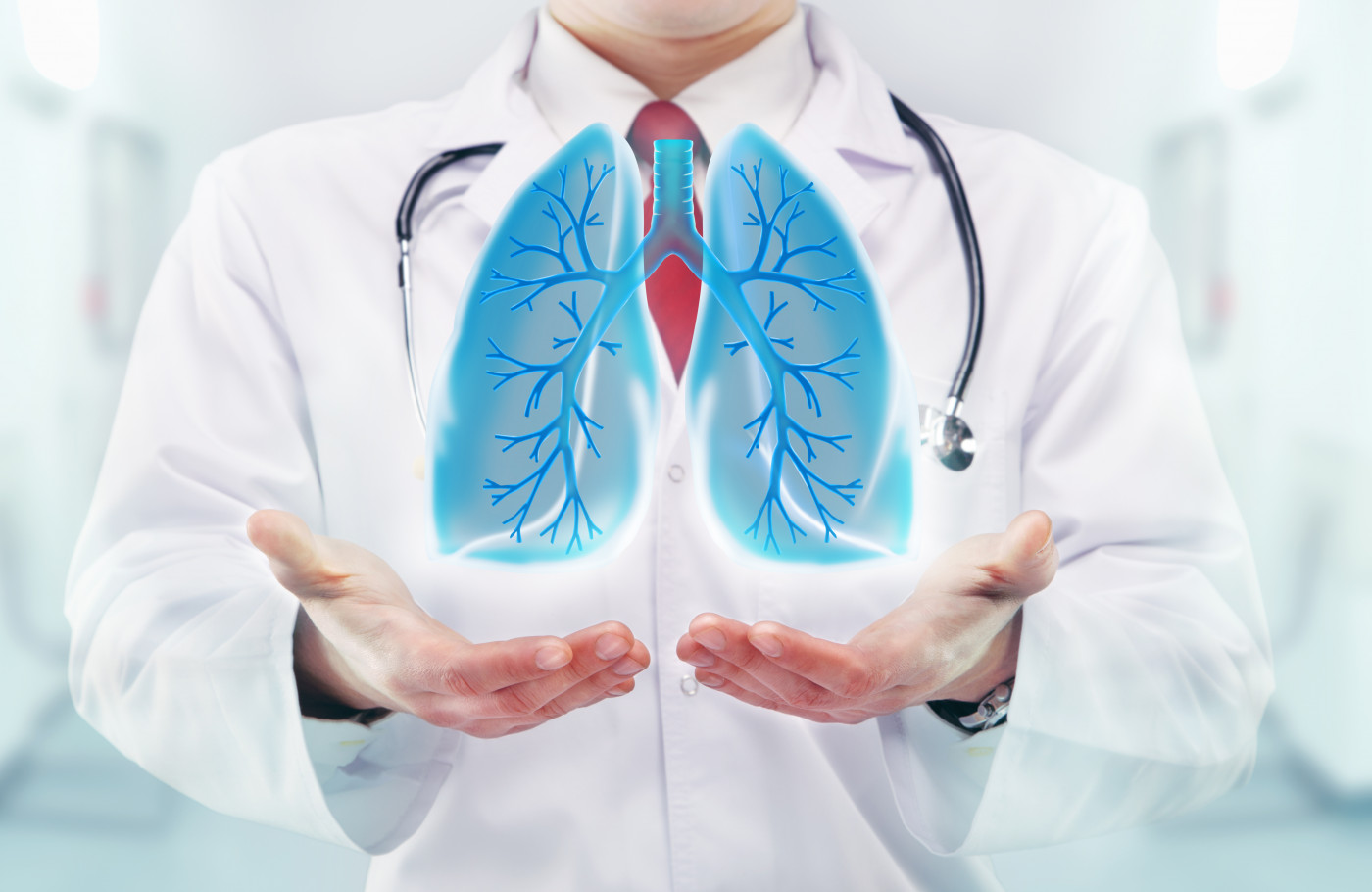Inhaled Hyaluronan Found to Ease Acute COPD Exacerbations
Written by |

In a pilot Phase 2 study, inhaled hyaluronan — which uses sugar secreted by living tissue that acts as a scaffold for cells — treated people with acute exacerbations of chronic obstructive pulmonary disease (COPD).
The therapy was found to improve lung function, ease respiratory failure, and reduce the need for non-invasive ventilation among these patients.
Because hyaluronan is critical to the structure of the extracellular matrix — which provides that scaffolding to cells in the lungs — the investigators note that the study “shows for the first time the therapeutic potential of an extracellular matrix molecule in acute exacerbation of human lung disease.”
The study, “Inhaled high molecular weight hyaluronan ameliorates respiratory failure in acute COPD exacerbation: a pilot study,” was published in the journal Respiratory Research.
Acute exacerbations of the chronic lung disease, called AECOPD, which require hospitalization, are frequent and costly for COPD patients. In hospitalized patients, severe AECOPD increases the need for prolonged care, and treatment may include bronchodilators, anti-inflammatory corticosteroids, and antibiotics.
High molecular weight hyaluronan, or HMW-HA, is a sugar that is naturally secreted by human tissues, including the extracellular matrix of the lungs. Hyaluronan is an anti-inflammatory agent that can alleviate damage to lung tissue and has been used as an airway lubricant in nasal sprays.
These anti-inflammatory and hydrating properties make it a promising potential treatment for AECOPD.
In a Phase 2 clinical trial (NCT02674880), researchers investigated if treatment with inhaled hyaluronan would improve lung function and reduce the need for non-invasive ventilation.
The study enrolled patients admitted to the Campus Biomedico at the University of Rome, in Italy, with respiratory failure due to severe AECOPD; the patients had required non-invasive ventilation.
These participants were treated at the hospital between March 2016 and July 2019, after they failed to improve following at-home interventions. Of the 41 patients included in the study, 20 received 5 ml inhaled HMW-HA and 21 received 5 ml inhaled saline (placebo).
Treatment with HMW-HA significantly reduced the time window of respiratory failure, compared with a placebo. The average time on non-invasive ventilation was 5.2 days for HMW-HA patients and 6.4 days for placebo patients.
HMW-HA patients also had significantly shorter hospitalizations, with an average stay of 7.2 days compared to 10.2 days for those given a placebo.
“These data suggest that HMW-HA shortened the duration of acute respiratory failure, need for [non-invasive ventilation] and consequently hospital LOS [total length of stay] in these patients,” the researchers wrote.
Those patients treated with HMW-HA also showed significantly improved lung function compared to those receiving a placebo. The HMW-HA-treated patients had lower peak ventilator pressures throughout treatment and a significantly increased average oxygenation, as measured by pO2/FiO2 ratio.
An analysis of blood biomarkers for inflammation — specifically C-reactive protein and interleukin-6 — found significantly decreased levels in the individuals treated with HMW-HA but not in those receiving the placebo. This suggests that HMW-HA treatment may help alleviate AECOPD-associated inflammation.
In human bronchial epithelial cells — the cells that line the major air passages of the lungs — collected from COPD patients, hyaluronan treatment facilitated mucociliary clearance, the protective self-clearing process that occurs in respiratory airways in which mucus, and potentially harmful substances contained in it, are moved out of the lung. A similar effect was seen in cigarette smoke-exposed cells treated with hyaluronan.
“Inhaled HMWHA may be beneficial in severe AECOPD, by improving inflammation and lung function, and reducing the need for ventilatory support,” the researchers wrote. “Our study supports the use of a novel class of treatment, i.e. matrix biologics, in acute and chronic lung disease.”
Nonetheless, the team noted that “additional studies should confirm our findings with higher number of patients in additional clinical sites.” Further trials should “explore the use of HMWHA in chronic COPD, both to reduce COPD progression and to decrease exacerbations which are the major driver of morbidity, mortality and cost in this devastating disease,” the researchers concluded.




